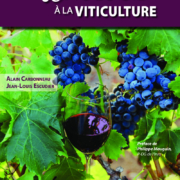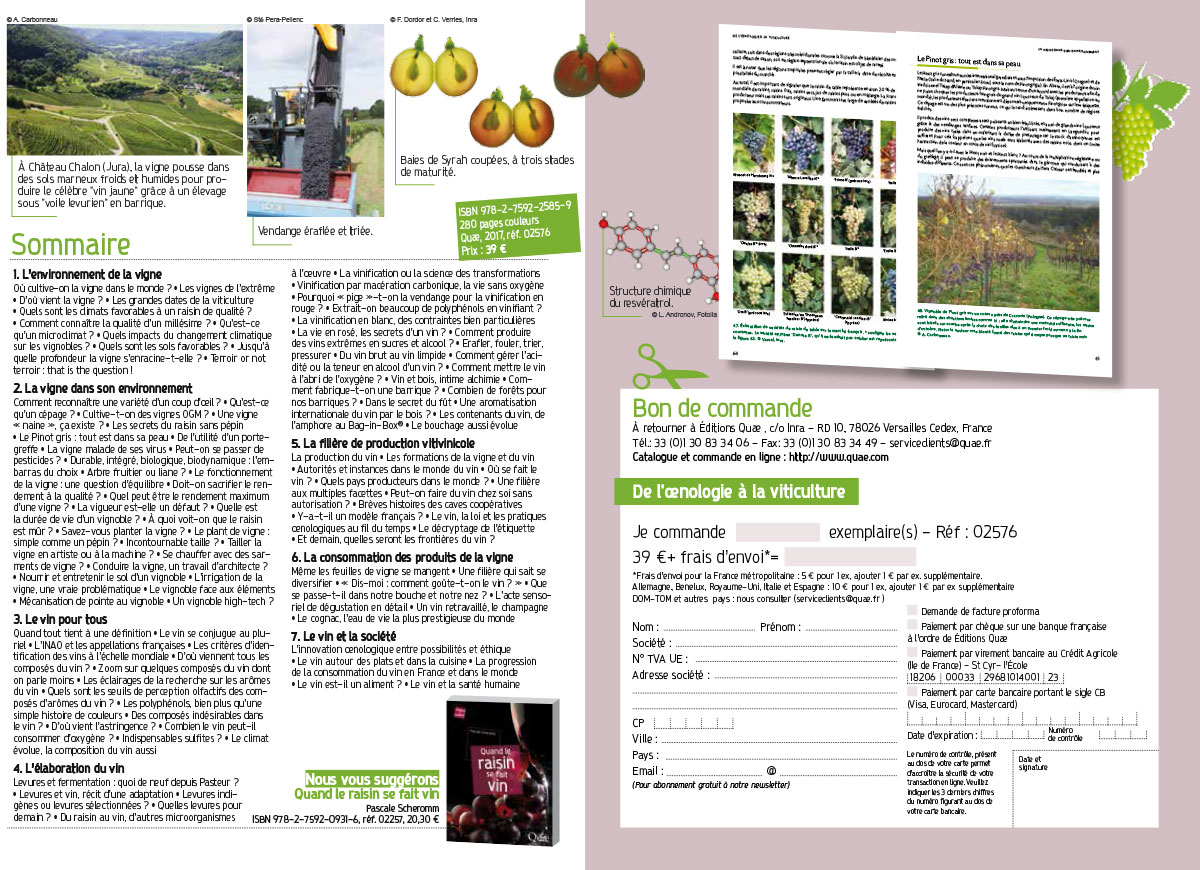Archive pour l’année : 2018
PG&E studies electrodialysis for cold stability
/dans blogCalifornia’s 1,100 wineries produce 500 million gallons of some of the world’s finest wines. In the process, they consume around 400 gigawatt-hours (GWh) of electricity every year — the equivalent of powering almost 60,000 homes. More than 25% of this electricity is spent on clarification-stabilization, the final step in which tartaric acid is reduced through energy-intensive refrigeration.
As an alternative to refrigeration, some winemakers are using electrodialysis, a technology developed in Europe in the early 1990s. The titratable acidity (tartaric, citric, malic and ascorbic acid concentrations) is unchanged. Potassium bitartrate and calcium tartrate salts are removed from solution.
Pacific Gas & Electric Company (PG&E) commissioned two studies at California wineries, with the goal of determining the most energy-efficient methods to stabilize wines. The first study, which took place at Fetzer Vineyards (Hopland, CA), compared the energy consumption of electrodialysis to that of cold stabilization. The second study compared the energy efficiency of cold stabilization at Fetzer Vineyards to that at another site, where cold stabilization was enhanced by seeding, using insulated tanks, and other factors.
Despite using more water, the electrodialysis process was found to be up to
99%more energy efficient than cold stabilization, using eight watt-hours (Wh) per gallon to stabilize the wine versus 22 to 1,200Wh per gallon for the cold stabilization process (whether tanks are insulated or not). For uninsulated tanks, it is 95%of 1,200Wh per gallon; for insulated tanks, it is 95%of 22Wh/gal.
Energy efficiency of the cold stabilization process varied greatly depending on a number of factors, including tank insulation, wine type, seeding, and duration of stabilization. Electrodialysis was shown to maintain wine quality, reduce wine loss, and reduce processing time from weeks to days.
Electrodialysis stabilized wine in just a little over one day, while the cold stabilization system that included seeding and tank insulation required five days. The unenhanced cold stabilization system took a full 46 days.
PG&E and Fetzer Vineyards: energy efficiency partners
These studies are part of PG&E’s Emerging Technologies (ET) program, which identifies, assesses, and brings to market the next generation of energy-efficiency solutions for Californians at home, at work, and in industry. ET works with a wide range of customers who have opened their homes or businesses to host these studies.
Working with PG&E, Fetzer Vineyards tested electrodialysis as part of the winery’s goal of adopting innovative and sustainable viticulture and winemaking methods. The mobile trailer-mounted « STARS » ED unit was provided by Winesecrets (Napa, CA).
« We have been very pleased to participate with PG&E in this electrodialysis study, » says Ann Thrupp, Fetzer sustainability manager. « As innovators in sustainable winegrowing practices, we hope this kind of information can be useful to others who are interested in saving energy and gaining efficiency benefits from new technologies. »
Science behind tartrate stabilization
As the final step before bottling, stabilization reduces the concentration of potassium bitartrate (cream of tartar) in wine. For customers, this means no « wine diamonds » will be visible at the bottom of a chilled bottle of wine. Traditionally, this is accomplished by chilling the wine to around 27°F for a period of 1½ to 3 weeks, depending on how quickly the potassium bitartrate is crystallized.
BY Steve Fok, PE
Pacific Gas & Electric Co.
https://www.practicalwinery.com/sepoct08/page1.htm
De l’œnologie à la viticulture
/dans blogLivre à lire : De l’œnologie à la viticulture
Aujourd’hui, la filière vitivinicole s’organise en définissant d’abord la demande en vins puis en choisissant des pratiques adaptées aux potentialités du terroir. Elle doit faire face à l’évolution profonde des marchés et des attentes des consommateurs, et aux défis du changement climatique.
Cet ouvrage aborde l’ensemble des étapes allant de l’environnement de la vigne à l’élaboration du vin, jusqu’à sa dégustation et ses effets sur la santé : climats, sols, terroirs, cépages, santé de la vigne, méthodes de culture, tailles, viticulture durable, appellations, vinification, composition du vin, innovations techniques, qualités organoleptiques, recherche sur les polyphénols et les arômes, dégustation sensorielle…
Ce livre, largement illustré, concilie les explications scientifiques des processus et la pédagogie des savoir-faire grâce à l’expérience des auteurs. Il s’adresse à tout lecteur intéressé par le monde du vin, qu’il soit viticulteur, œnologue, consommateur éclairé ou étudiant.
Additive-free solutions for winemakers
/dans blogMore natural winemaking methods offer additive-free solutions for winemakers as demand for transparency on all foods and beverages continues to grow
STARS can guarantee stability and improve wine quality with zero additives and zero wine loss!
A recent editorial by renowned French winemaker and researcher, Jean Luis Escudier outlined a major shift in European winemaking this year when the European Alcohol and Beverage Industry, in response to consumer demand for more transparency and following a series of meetings with the EU Commission, proposed a self-regulating agreement in which producers will list nutritional information and ingredients for their products.
The introduction of this agreement could be an indication that change might slowly be coming to the world of winemaking with respect to transparency and producer accountability. Producers may soon be unable to hide behind Federal law (that does not require labeling for alcoholic beverages above 1.2% alc.) or claim to be “all natural” or “low intervention” when listing a long list of additives, including the one used during the stabilization process, on the back of their labels.

Should the labeling law change, winemakers will either have to employ new methods of winemaking, that do not involve so many additives, or hope the more informed consumer will still buy their product. One non-additive solution winemakers could be embracing is STARS, the membrane electrodialysis technology that offers an additive-free stabilization method of winemaking.
Membrane electrodialysis technology was developed by INRA (the French National Institute for Agricultural Research) and Oenodia and has been used in winemaking since 1997. STARS is a membrane process that uses a charged current to extract the anions and cations in the calcium and potassium ions. This leads to wine stability without the use of any additives or loss of wine and the process is in a closed system so no oxygen pickup occurs either.
Yannick Le Gratiet, Director of Oenodia, talked about the process and how it came about, “It came down to the same fundamentals that the consumer is worried about today: What is in the wine? We wanted to create a process that would stabilize the wine while retaining the quality without adding a bunch of chemicals to it. We need to have fewer additives in the bottle and focus on the characteristics of the wine.”

Yannick is a big proponent of producer transparency. As a former winemaker, he understands the necessity for the additives in the market but believes there are better non-additive ways to achieve high-quality wine. STARS is the only system on the market to see 100% efficiency from beginning to end and has been doing so since the first unit was installed in 1997 and in that time not one bottle of wine has come back unstable. In contrast, additives can fail down the line causing haze or turbidity when you thought your wine was stable. There is no guarantee! With STARS, there is, and it has been proven over the last couple of decades.”
Oenodia attributes its success with STARS, not only to the ED technology but also to the development of the Stabilab, a test to measure the wine instability before treatment (DIT Test), provide a specific treatment number to get the wine stable at -4’ C and another test after treatment to check the wine and verify results (ISTC50 Test).
“We preach precision winemaking,” says Yannick, “There is no guesswork involved in the STARS system. Our compact, efficient and easily operated units have been developed by a team of skilled technical engineers and winemakers who bring invaluable expertise and experience.”
The STARS system is the only 100% efficient stabilization method with no additives, no oxygen pickup, and zero wine loss that is on the market. Last year they added STARS XF to their STARS line which combines a crossflow filtration system with the original STARS system so you can stabilize and filter your wine at the same time.

When talking about the future of the STARS system, Yannick is very positive that growth will continue at an accelerated pace. He says, “There are currently 250 stationary systems in wineries worldwide and we would like to see close to 450 units by 2025. Our goal is to reach 4 billion bottles stabilized by the STARS system, which would only account for about 10-15% of the worldwide wine market. That would mean that millions of consumers will enjoy wine without stabilization additives.”
“The market in the US continues to grow rapidly for us” he added. “In addition to our stationary unit sales, our STARS Mobile Service department now operates 3 mobile units from Napa offering our STARS pH, STARS Stab and new STARS XF (which combines STARS with crossflow filtration) processes. The 3 units allows us to not only provide our stabilizing service but we can also carry out trials as part of our stationary equipment sales. Customers are drawn to our single pass and 100% guarantee process which ensures “wine to bottle” quickly with quality, color, and stability intact along with zero wine loss, which along with everything else deliver a very attractive ROI on STARS.”
For more information, you can stop by the OENODIA booth #113 at WINEXPO on December 6th in Santa Rosa or at the UNIFIED Symposium, Booth #2406 in Sacramento, Jan 29th and 30th. Or you can visit us online at www.oenodia.us.
Les nouvelles « frontières du vin »
/dans blogLes nouvelles « frontières du vin » et les pratiques œnologiques de filtration, clarification et stabilisation
Consulter l’article de la revue des œnologues N°165 spécial : Cliquez ici
Analyses des approches de la stabilisation tartrique des vins
/dans blogAnalyses des approches opérationnelles actuelles de la stabilisation tartrique des vins
Consulter l’article de la revue des œnologues N°165 spécial : Cliquez ici
Evolutions dans la clarification et la stabilisation en ligne
/dans blogÉvolutions dans la clarification et la stabilisation en ligne par couplage de procédés membranaires
Consulter l’article de la revue des œnologues N°165 spécial : Cliquez ici
Nos solutions
Contact
OENODIA
ZAC St Martin
Impasse St Martin
84120 – Pertuis – FRANCE
Tel+33 (0)4 90 08 75 00
Fax+33 (0)4 90 08 75 19







